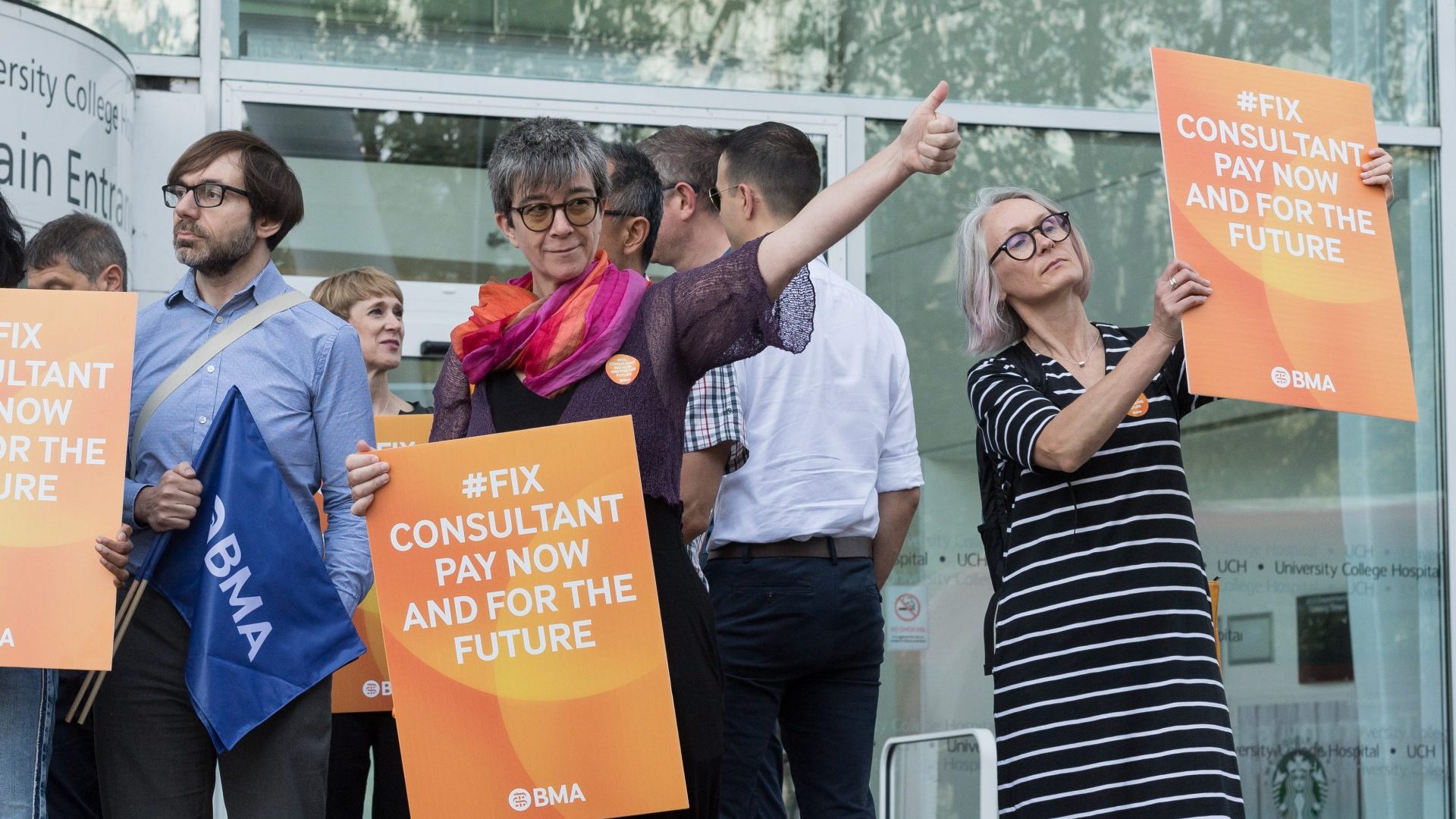In September 2023, Joe Biden became the first sitting US president to join strikers on a picket line. He told car workers that they “deserve a significant raise and other benefits”.
Even more surprisingly perhaps, those same workers – in a dispute with three of America’s biggest car manufacturers – were later praised by Donald Trump. Meanwhile in the UK, Labour leader Sir Keir Starmer has pledged to repeal anti-strike laws, and “unequivocally” support the right to strike.
It seems that ongoing – and largely successful – strike action in both the UK and the US has forced political leaders to take trade unions more seriously than they have for decades.
There is a shifting balance of power towards the unions, with employers increasingly agreeing settlements in the strikers’ favour. In the UK, key workers in sectors such as education, healthcare and transport continue to strike in pursuit of better pay and conditions – no doubt encouraged by the successes they have seen elsewhere.
For example, in October last year, striking barristers received a 15% pay rise, while London bus drivers ended their industrial action after accepting a pay deal worth 18% in February 2023. Then in July, Royal Mail workers concluded a three-year dispute after receiving a 10% rise .
In the US, a well-publicised strike which stopped production of popular TV shows and films ended in success for the Writers Guild of America, bolstering action by striking actors who have now agreed a “tentative” deal with Hollywood studios.
Low numbers and high barriers
That successful strike action is taking place at such a size and scale is remarkable considering the various hurdles still being faced by unions in both countries.
UK unions, once powerful enough to bring down a government (as when Edward Heath succumbed to the National Union of Mineworkers in 1974), have faced an increasingly restrictive environment. This culminated in 2016 legislation which established high legal barriers for strike action, such as requiring a 50% turnout, or placing tight restrictions on where and how pickets can be conducted.
In the US, striking rights are weaker still, with the balance of power overwhelmingly favouring employers. Every single state (except for Montana) is an “at will” state, meaning that an employer can effectively dismiss an employee at any time, for any reason (if the decision is not illegal, such as being discriminatory).
Membership levels also paint a depressing picture for trade unions. In the UK, just 22.3% of workers were part of a union in 2022. In the US, the proportion is 10.1%, and 84% of households do not include a single union member.
For younger workers, with no memory or experience of what unions have achieved in the past, the numbers are even lower. Only 4.4% of US workers aged 16 to 24 are members of a union, and in the UK it’s just 3.7%.
Lower levels of union membership results in less bargaining power, and therefore a weakening of employment rights and job security – which again makes the recent levels of industrial action a surprise.
Striking a blow
Falling membership also has a direct impact on the number of working days lost to industrial action, with substantial declines in recent decades. The US saw a peak of 52.8 million lost working days in 1970, and a low of 200,000 in 2014.
In the UK, 29.5 million working days lost in 1979 went down to as little as 170,000 in 2015.
But this vital metric of successful unionisation is also changing, with the number of days lost rising to 2.2 million in the US, and 2.5 million in the UK in 2022.
This suggests unions are becoming much more effective at galvanising the members they do have. An increase in the number of lost working days implies that workers’ feel like they can take industrial action, and that such action will actually make a difference.
This snowball effect will only embolden unions further, and aggrieved workers will feel more confident about standing up to their employers.
The fact that workers seem to be feeling empowered despite low numbers and an increase in the barriers to strike action, begs an important question about what is behind the current resurgence.
It may be down to the cost-of-living crisis spurring strained workers to demand above-inflation pay rises. Or it may be thanks to unemployment levels being at their lowest in nearly 50 years, providing substantial bargaining power and leverage.
Many employers would struggle to find replacement workers at the moment, especially highly skilled ones, like those in the car industry. Unions know this, and therefore feel more comfortable agitating for better terms and conditions.
Responding to the unions’ apparent new levels of confidence, the UK government recently introduced legislation designed to force some strikers back to work. Meanwhile Labour, which receives substantial funding from unions, is seeking to walk a tightrope of pleasing both workers and employers as it seeks a broad electoral coalition.
Both parties need to accept that trade unionism is experiencing a revival few thought possible – and one that shows no signs of stopping.
This article is republished from The Conversation under a Creative Commons license. Read the original article.
Steven Daniels, Lecturer in Law and Politics, Edge Hill University









